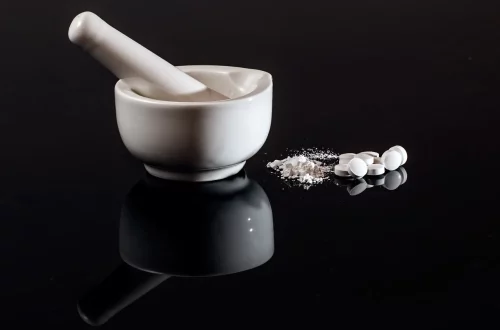
Understanding Sun Spots vs Freckles: Key Differences Explained
Skin is a remarkable organ that plays a vital role in protecting the body while also reflecting various internal and external factors. Among the many characteristics of skin, pigmentation variations often capture attention. Sun spots and freckles are two common forms of hyperpigmentation that can appear on the skin, especially in individuals with lighter complexions. While they may seem similar at first glance, these two skin phenomena have distinct characteristics, causes, and implications for skin health.
Understanding the differences between sun spots and freckles is essential for those looking to manage their skin’s appearance and health. These differences can influence decisions regarding skincare routines, sun protection strategies, and even cosmetic treatments. The increasing awareness of skin health and beauty has led many to seek clarity on these terms, as well as effective solutions for maintaining a youthful and even complexion. With the right knowledge, it becomes easier to navigate the world of skin pigmentation and to make informed choices that cater to individual skin needs.
What Are Freckles?
Freckles, or ephelides, are small, flat spots that are typically light brown or tan in color. They are often found on sun-exposed areas of the skin, such as the face, arms, and shoulders. Freckles are a result of an increase in melanin production, which is triggered by sun exposure. Unlike other forms of skin pigmentation, freckles are generally harmless and often seen as a beauty characteristic by many.
Freckles tend to be more common in individuals with red or fair hair and light skin. This genetic predisposition is linked to variations in the MC1R gene, which plays a significant role in determining skin pigmentation. When exposed to UV radiation from the sun, melanocytes—the skin cells responsible for producing melanin—react by increasing melanin production, leading to the development of freckles.
It’s important to note that freckles can fade in the winter months when sun exposure is limited. However, they can become darker and more pronounced during the summer due to increased sun exposure. This cyclical nature of freckles makes them unique; they can change with the seasons and are often viewed as a natural indicator of sun exposure.
For those who wish to minimize the appearance of freckles, a variety of options are available. Sunscreen is the most effective preventive measure, helping to protect skin from UV rays. Additionally, topical treatments containing ingredients like vitamin C, hydroquinone, or retinoids can lighten freckles over time. However, it’s crucial to consult with a dermatologist before starting any treatment to ensure it is appropriate for your skin type.
Understanding Sun Spots
Sun spots, also known as solar lentigines or age spots, are larger, flat areas of pigmentation that often appear on sun-exposed skin as people age. These spots are typically brown, tan, or black and tend to develop in areas such as the face, hands, shoulders, and back. Unlike freckles, sun spots are not genetic but are primarily caused by prolonged exposure to UV radiation over time.
The development of sun spots is a response to cumulative sun damage. When the skin is exposed to UV rays, it attempts to protect itself by producing more melanin. Over the years, this excess melanin can accumulate, leading to the formation of sun spots. Unlike freckles, which may fade with reduced sun exposure, sun spots are more persistent and often require treatment for removal.
Sun spots are generally harmless; however, they can be a sign of sun damage. This makes them a concern for individuals who are vigilant about their skin health. Regular use of sunscreen can help prevent the formation of new sun spots, while treatments such as chemical peels, laser therapy, and cryotherapy can effectively reduce the appearance of existing ones.
It’s important to differentiate sun spots from other skin conditions, such as moles or skin cancer. Any sudden changes in size, shape, or color of skin lesions should be evaluated by a dermatologist. Regular skin checks can help identify any concerning changes early.
Key Differences Between Freckles and Sun Spots
While both freckles and sun spots are forms of hyperpigmentation, several key differences set them apart. Firstly, their appearance varies; freckles are usually smaller, lighter, and more numerous, while sun spots are larger, darker, and occur less frequently. This distinction is crucial when assessing skin changes.
Origin is another differentiating factor. Freckles are primarily genetic and vary with sun exposure, while sun spots are predominantly a result of cumulative sun damage over time. This means that freckles can change and fade with the seasons, whereas sun spots are more likely to persist once they have formed.
The age of occurrence also plays a role. Freckles often appear in childhood or adolescence, particularly in individuals with lighter skin tones. In contrast, sun spots typically develop later in life, often becoming more noticeable in middle age or beyond.
Treatment approaches differ as well. While both types of pigmentation can be managed with sun protection, freckles can often fade with less aggressive treatments, such as topical lighteners or regular sunscreen use. Sun spots, on the other hand, may require more intensive treatments like laser therapy or chemical peels to achieve significant results.
Understanding these differences can help individuals make informed decisions about their skincare routines and treatment options. Recognizing the unique characteristics of each can empower people to take proactive steps in protecting their skin from further damage.
Prevention and Care for Your Skin
Taking care of your skin is essential not only for aesthetic reasons but also for overall health. Both freckles and sun spots can serve as reminders of sun exposure, making sun protection paramount. The most effective way to prevent both types of pigmentation is to practice diligent sun safety.
Using a broad-spectrum sunscreen with an SPF of 30 or higher is crucial. Apply it generously to all exposed skin areas, even on cloudy days or during winter months. Reapply every two hours, and immediately after swimming or sweating.
Additionally, wearing protective clothing, such as long sleeves and wide-brimmed hats, can provide extra defense against UV rays. Seeking shade during peak sun hours, typically between 10 a.m. and 4 p.m., can also reduce exposure.
For those who already have freckles or sun spots, a skincare routine that emphasizes gentle exfoliation and hydration can promote a healthy complexion. Ingredients like antioxidants, retinoids, and alpha hydroxy acids can help improve skin texture and tone over time.
Regular visits to a dermatologist for skin checks can also help monitor any changes in pigmentation and ensure early detection of potential issues. Taking these steps will not only help manage existing freckles and sun spots but also protect against future skin damage.
In conclusion, understanding the differences between freckles and sun spots is essential for effective skin care. By adopting proactive measures and seeking professional advice when necessary, individuals can maintain healthy, beautiful skin for years to come.
**Disclaimer:** This article is for informational purposes only and does not constitute medical advice. For health concerns or skin conditions, please consult a qualified healthcare provider.




